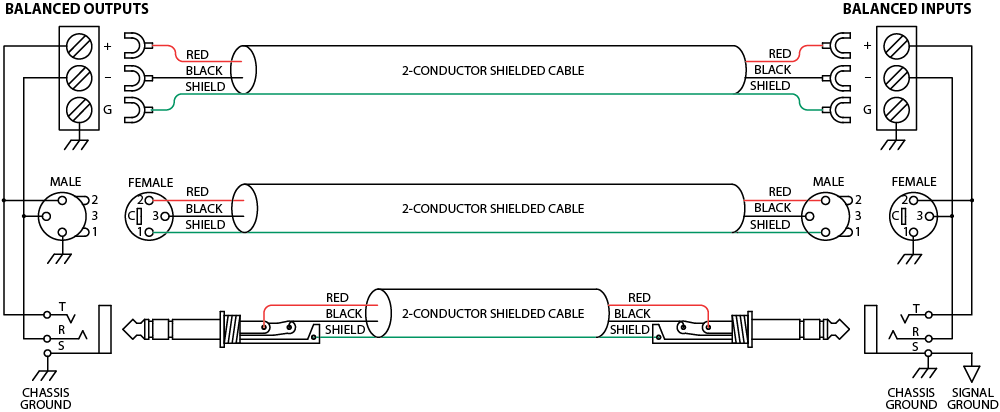@atmasphere Wrote:
This might be easier to understand if you think about a simple output transformer with only 2 output wires, driving pin 2 and pin 3 with no connection at all to pin 1 (which is chassis ground).
The diagram below shows that!
Mike
The Absolute Best Right Way To Do It
The method specified by AES48 is to use balanced lines and tie the cable shield to the metal chassis (right where it enters the chassis) at both ends of the cable.


